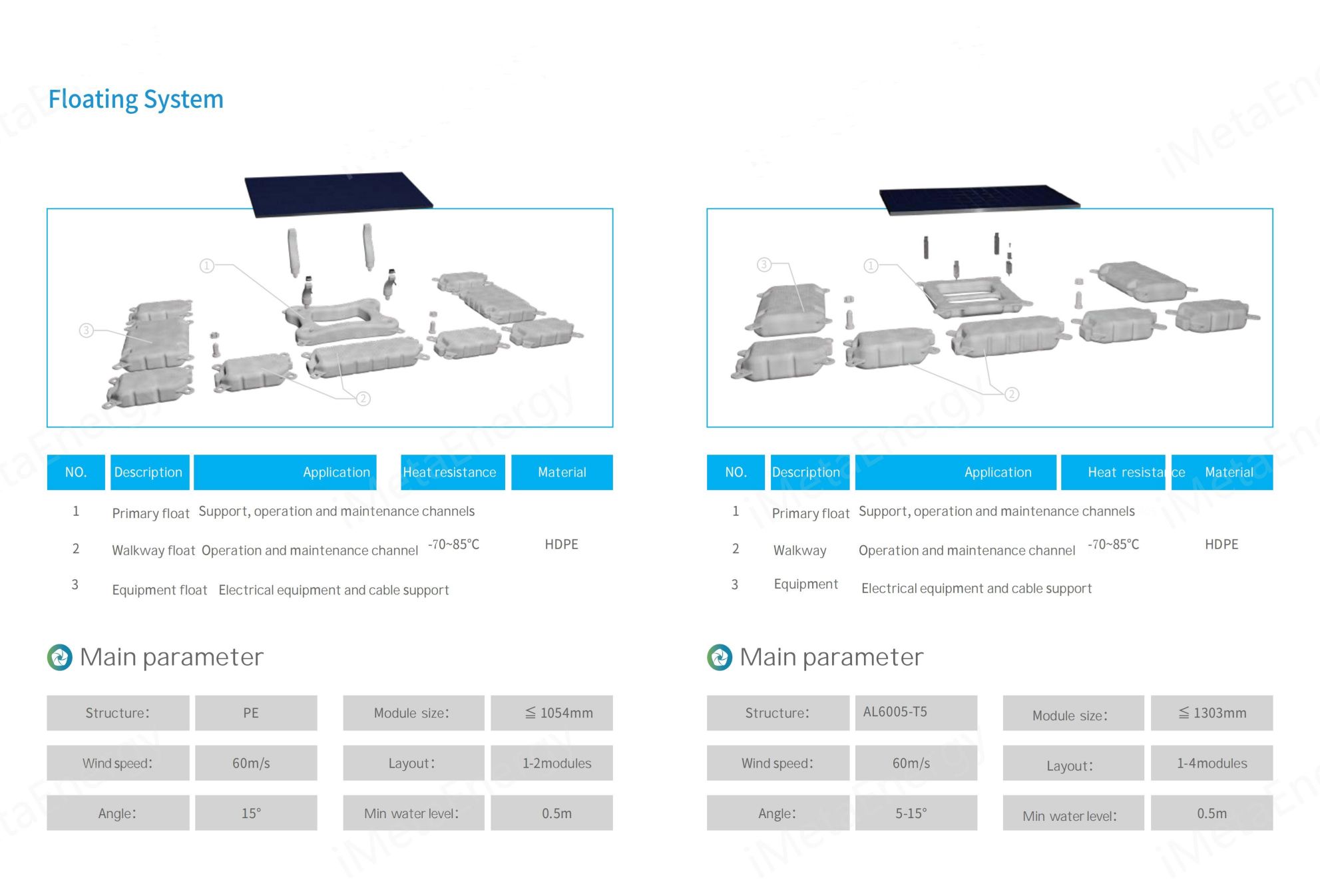Payment Terms :
TT / LCProduct Origin :
ChinaMaterial :
HDPE & Aluminum & SteelShipping Port :
XiamenLead Time :
7-15daysCompared with traditional photovoltaic power plants, floating photovoltaic is the installation of photovoltaic power generation components on the surface of the floating body, which is more expensive to build, but has several advantages. First, it does not occupy land resources. Second, floating photovoltaic power stations can reduce water evaporation, improve water quality, inhibit algae growth, and be beneficial to aquaculture and daily fishing. Finally, due to the cooling effect of the water on the photovoltaic modules and cables, the floating photovoltaic power station effectively improves the power generation efficiency compared with the ground-mounted system.
Product Features
Floating photovoltaic power station refers to the power generation equipment such as photovoltaic modules and inverters floating on the water surface by means of floating bodies and platforms. It is suitable for water with water depth greater than 3m and stable water body little affected by typhoon.
1. There are three types of floating foundation: float tube + support, float + support and integrated float.
2. Taking into account the influence of strong winds and waves, the installation Angle of the component should not exceed 20° inclination Angle, and the installation Angle of the mainstream design in the industry is generally 10 ~ 18°.
3. Therefore, floating photovoltaic power stations are more suitable for construction in areas where the latitude is not large, and the radiation loss of the inclined plane is not obvious compared to the optimal inclination Angle.
4. The floating body is fixed through the anchoring system, and the fixing method is designed reasonably according to the offshore distance and water depth. When the floating body is close to the shore, the floating body is fixed on the shore with ropes or poles; When the offshore is far away and the water depth is large, it can be fixed by concrete anchor block + tension spring.
5. The anchoring system should be able to adapt to the change of water level, and is generally designed to be adjustable within 5m of the water level.


Submit your email to get helpful tips and useful information for our partners.